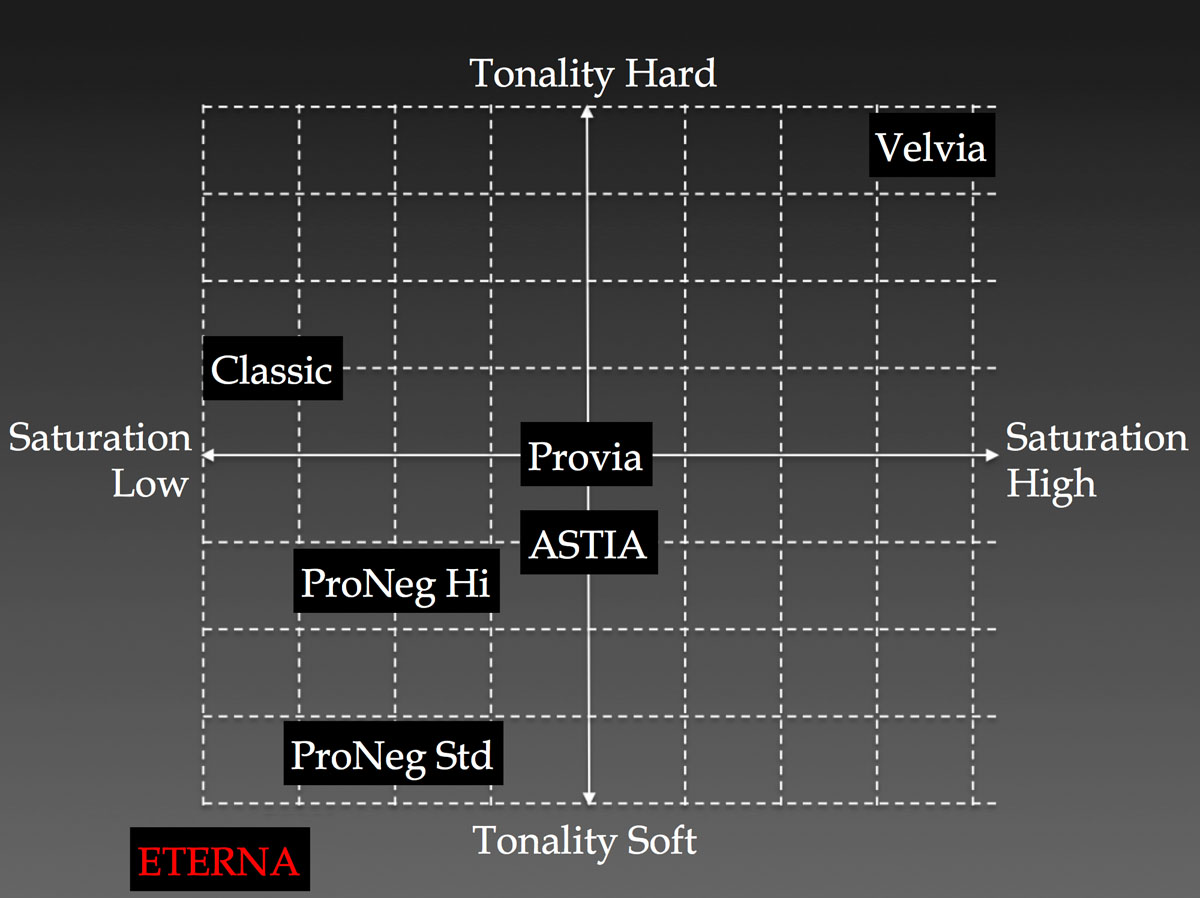
Can/should/will ETERNA be used for photography? is a strange question, because photographers will try crazy things to get a look that they enjoy. There really are no right or wrong in photography, but if you want a larger audience there are certainly best practices that will help you to create work that more people will enjoy. This is why Fujifilm released X-H1 Development Story #5 -Film Simulation ETERNA Pt.2 to give photographers some best practices right from the beginning. In Fujifilm’s estimation:
“ETERNA has very low saturation and soft tonality. As shown in the chart, it goes beyond the grid when it is compared with other film simulation modes. ETERNA is not designed in the same way as other film simulation modes which are all intended for still photography. PROVIA will let you take great photos in any given situations, but not ETERNA. However when used right, it will give you the unique world view.”
In their article, they draw some comparison between Pro Neg.STD and ETERNA, which lead to their first recommended use case.
“People often use Velvia for landscape photography, but it can be excessive if the subject”s saturation is high. Velvia is good when you need to enhance the saturation, but when the saturation is high enough, try ETERNA or Pro Neg. STD instead.”
The second probably more interesting use case for ETERNA is to use it for editorials.
“Another idea is to treat ETERNA in the same way as you would when you shoot cinema, to complement other elements of communication. In editorial, for example, the photographs are combined with texts to deliver a message. ETERNA is a good one to use in editorial as it would complement the text. The images with soft tonality and low saturation allow readers engage into the story seamlessly.
The soft tonality of ETERNA also looks great on matte paper. So when the editorial is printed on a matte paper, then it creates an further enhanced experience for the readers. When you think of the communication in a big picture, ETERNA has its use for sure.”
As Fujifilm points out at the end of their article you simply couldn’t fit ETERNA in a film camera, so not much has been studied about it for photography yet, but I am sure photographers will embrace experimenting with their new film simulation the same way they might any new tool they are given to create something different and desirable. When I get the Fujifilm X-H1 I plan to leave the camera set to ETERNA throughout much of my time with it, much like I did with ACROS, so I can decide how I might use the new Film Simulation, because the EVF will get me used to ETERNA colors.
Doing an EXIF hack to edit your photos is one thing to try ETERNA, but actively composing in ETERNA will be very interesting. I shoot RAW so the colors won’t be baked in, but when I import my files into Lightroom I can choose to us ETERNA there or any other digital film simulation I like. Of course, we all have our own style and I would never call something “wrong” because photography really is one of the few things you can do where you get to do what makes you happy unless you have a very particular client.
Development Story #4
Development Story #3
Development Story #2
Development Story #1


